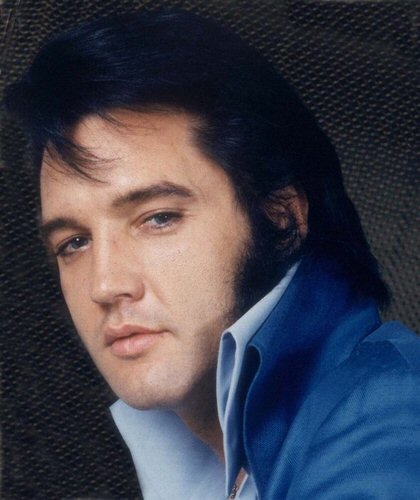



Labor Day is a United States federal holiday observed on the first Monday in September (September 7 in 2009).
The holiday originated in Canada out of labor disputes ("Nine-Hour Movement") first in Hamilton, then in Toronto, Canada in the 1870s, which resulted in a Trade Union Act which legalized and protected union activity in 1872 in Canada. The parades held in support of the Nine-Hour Movement and the printers' strike led to an annual celebration in Canada. In 1882, American labor leader Peter J. McGuire witnessed one of these labor festivals in Toronto. Inspired from Canadian events in Toronto, he returned the USA, to New York and organized the first American "labor day" on September 5 of the same year. The first Labor Day in the United States was celebrated on September 5, 1882 in New York City. In the aftermath of the deaths of a number of workers at the hands of the US military and US Marshals during the 1894 Pullman Strike, President Grover Cleveland put reconciliation with Labor as a top political priority. Fearing further conflict, legislation making Labor Day a national holiday was rushed through Congress unanimously and signed into law a mere six days after the end of the strike. Cleveland was also concerned that aligning a US labor holiday with existing international May Day celebrations would stir up negative emotions linked to the Haymarket Affair. All 50 U.S. states have made Labor Day a state holiday. The form for the celebration of Labor Day was outlined in the first proposal of the holiday: A street parade to exhibit to the public "the strength and esprit de corps of the trade and labor organizations," followed by a festival for the workers and their families. This became the pattern for Labor Day celebrations. Speeches by prominent men and women were introduced later, as more emphasis was placed upon the economic and civil significance of the holiday. Still later, by a resolution of the American Federation of Labor convention of 1909, the Sunday preceding Labor Day was adopted as Labor Sunday and dedicated to the spiritual and educational aspects of the labor movement. Traditionally, Labor Day is celebrated by most Americans as the symbolic end of the summer. The holiday is often regarded as a day of rest and parades. Speeches or political demonstrations are more low-key than May 1 Labour Day celebrations in most countries, although events held by labor organizations often feature political themes and appearances by candidates for office, especially in election years. Forms of celebration include picnics, barbecues, fireworks displays, water sports, and public art events. Families with school-age children take it as the last chance to travel before the end of summer recess. Similarly, some teenagers and young adults view it as the last weekend for parties before returning to school. However, start dates for schools vary widely, beginning as early as July 24 in urban districts such as Atlanta, Miami, and Los Angeles. In addition, Labor Day marks the beginning of the NFL and college football seasons. The NCAA usually plays their first games the week before Labor Day, with the NFL traditionally playing their first game the Thursday following Labor Day
The holiday originated in Canada out of labor disputes ("Nine-Hour Movement") first in Hamilton, then in Toronto, Canada in the 1870s, which resulted in a Trade Union Act which legalized and protected union activity in 1872 in Canada. The parades held in support of the Nine-Hour Movement and the printers' strike led to an annual celebration in Canada. In 1882, American labor leader Peter J. McGuire witnessed one of these labor festivals in Toronto. Inspired from Canadian events in Toronto, he returned the USA, to New York and organized the first American "labor day" on September 5 of the same year. The first Labor Day in the United States was celebrated on September 5, 1882 in New York City. In the aftermath of the deaths of a number of workers at the hands of the US military and US Marshals during the 1894 Pullman Strike, President Grover Cleveland put reconciliation with Labor as a top political priority. Fearing further conflict, legislation making Labor Day a national holiday was rushed through Congress unanimously and signed into law a mere six days after the end of the strike. Cleveland was also concerned that aligning a US labor holiday with existing international May Day celebrations would stir up negative emotions linked to the Haymarket Affair. All 50 U.S. states have made Labor Day a state holiday. The form for the celebration of Labor Day was outlined in the first proposal of the holiday: A street parade to exhibit to the public "the strength and esprit de corps of the trade and labor organizations," followed by a festival for the workers and their families. This became the pattern for Labor Day celebrations. Speeches by prominent men and women were introduced later, as more emphasis was placed upon the economic and civil significance of the holiday. Still later, by a resolution of the American Federation of Labor convention of 1909, the Sunday preceding Labor Day was adopted as Labor Sunday and dedicated to the spiritual and educational aspects of the labor movement. Traditionally, Labor Day is celebrated by most Americans as the symbolic end of the summer. The holiday is often regarded as a day of rest and parades. Speeches or political demonstrations are more low-key than May 1 Labour Day celebrations in most countries, although events held by labor organizations often feature political themes and appearances by candidates for office, especially in election years. Forms of celebration include picnics, barbecues, fireworks displays, water sports, and public art events. Families with school-age children take it as the last chance to travel before the end of summer recess. Similarly, some teenagers and young adults view it as the last weekend for parties before returning to school. However, start dates for schools vary widely, beginning as early as July 24 in urban districts such as Atlanta, Miami, and Los Angeles. In addition, Labor Day marks the beginning of the NFL and college football seasons. The NCAA usually plays their first games the week before Labor Day, with the NFL traditionally playing their first game the Thursday following Labor Day

























%5B1%5D.jpg)







